
Slovenia is a Central European country with a history of relatively low crime. Slovenia has an assortment of police forces, with the Slovenian National Police Force the primary law enforcement agency.

Slovenia is a Central European country with a history of relatively low crime. Slovenia has an assortment of police forces, with the Slovenian National Police Force the primary law enforcement agency.
The Slovenian National Police Force is responsible for criminal justice in Slovenia as overseen by the Ministry of the Interior. As of 2012, the Slovenian police force consists of approximately 9,000 officers. [1] Between 2010 and 2019, police addressed an average of 75,510 criminal offenses annually, with the total number of annual crimes decreasing later in the decade. [2] The amount of reported criminal activity decreased during the COVID-19 pandemic in 2020. [3] Prosecutors are responsible for initiating criminal proceedings in most cases, though victims may do so in some circumstances. Prosecution, defense, and trial are conducted separately during criminal proceedings. [1] As of 2018, there were 1,396 people in prison in Slovenia, making up 79.98 per 100,000 of the adult population. [4]
The study of criminology emerged as a scientific field in Slovenia during the early-20th century, pioneered by Aleksander Maklecov. The government provided for the publishing of the Journal of Criminal Investigation and Criminology in 1950 and the Institute of Criminology at the Faculty of Law was established in the University of Ljubljana in 1954. Most criminology projects in Slovenia are funded by the Slovenian Research Agency. [1]
In 2017, 324 firearms and other weapons were seized by law enforcement. In 2018, there were 10 acts of intentional homicide. This amounts to 0.5 instances of homicide per 100,000 people, compared to a world average of 5.8 per 100,000. In the same year, there were 1,544 acts of assault resulting in serious bodily injury, 6 instances of kidnapping, and 264 instances of violent robbery per 100,000 people. In 2017, there were 427 instances of sexual violence per 100,000 people. 25 victims of human trafficking were detected in 2017. [4]
Crime in Slovenia caused an estimated 510 million euros of damage in 2017. [5] In 2018, there were 3,907 instances of fraud, 8,388 instances of burglary, and 19,613 instances of theft per 100,000 people. [4]
Turbulence during the fall of Communism resulted in an increase of organized crime in Slovenia. The government of Slovenia operates in accordance with the practices of Europol when addressing organized crime. [6] 1.5% of crimes investigated in 2019 were classified as organized crime. [2]

Criminal justice is the delivery of justice to those who have been accused of committing crimes. The criminal justice system is a series of government agencies and institutions. Goals include the rehabilitation of offenders, preventing other crimes, and moral support for victims. The primary institutions of the criminal justice system are the police, prosecution and defense lawyers, the courts and the prisons system.
A violent crime, violent felony, crime of violence or crime of a violent nature is a crime in which an offender or perpetrator uses or threatens to use harmful force upon a victim. This entails both crimes in which the violent act is the objective, such as murder, assault, rape and assassination, as well as crimes in which violence is used as a method of coercion or show of force, such as robbery, extortion and terrorism. Violent crimes may, or may not, be committed with weapons. Depending on the jurisdiction, violent crimes may be regarded with varying severities from homicide to harassment.

Carjacking is a robbery in which a motor vehicle is taken over. In contrast to car theft, carjacking is usually in the presence and knowledge of the victim. A common crime in many places in the world, carjacking has been the subject of legislative responses, criminology studies, prevention efforts as well as being heavily dramatized in major film releases. Commercial vehicles such as trucks and armored cars containing valuable cargo are common targets of carjacking attempts. Carjacking usually involves physical violence to the victim, or using the victim as a hostage. In rare cases, carjacking may also involve sexual assault.
Crime in Canada is generally considered low overall. Under the Canadian constitution, the power to establish criminal law & rules of investigation is vested in the federal Parliament. The provinces share responsibility for law enforcement, and while the power to prosecute criminal offences is assigned to the federal government, responsibility for prosecutions is delegated to the provinces for most types of criminal offences. Laws and sentencing guidelines are uniform throughout the country, but provinces vary in their level of enforcement.

Crime in Australia is managed by various law enforcement bodies, the federal and state-based criminal justice systems and state-based correctional services.
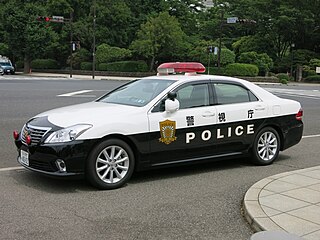
Crime in Japan has been recorded since at least the 1800s, and has varied over time.
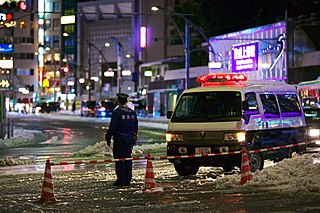
Law enforcement in Japan is provided mainly by prefectural police under the oversight of the National Police Agency. The National Police Agency is administered by the National Public Safety Commission, ensuring that Japan's police are an apolitical body and free of direct central government executive control. They are checked by an independent judiciary and monitored by a free and active press.

Crime is one of the most urgent concerns facing Mexico, as Mexican drug trafficking rings play a major role in the flow of cocaine, methamphetamine, fentanyl, heroin, and marijuana transiting between Latin America and the United States. Drug trafficking has led to corruption, which has had a deleterious effect on Mexico's Federal Representative Republic. Drug trafficking and organized crime have been a major source of violent crime. Drug cartels and gangs have also branched out to conduct alternative illegal activities for profit, including sex trafficking in Mexico. Some of the most increasingly violent states in Mexico in 2020 included Guanajuato, Zacatecas, Michoacán, Jalisco, and Querétaro. Some of the world's most violent cities are reportedly within the state of Guanajuato with extortion from criminal groups now being commonplace. The state of Zacatecas is said to be valuable to multiple organized crime groups for drug trafficking, specifically methamphetamine to the United States. As of 2021, Michoacán is experiencing increased instances of extortion and kidnapping due to a growing presence and escalation in the armed conflicts between CJNG and Cárteles Unidos on regions bordering the neighboring state of Jalisco. CJNG is also currently battling the Los Chapitos faction of the Sinaloa Cartel in the North Mexican region of Sonora.

Crime has been recorded in the United States since its founding and has fluctuated significantly over time. Most available data underestimate crime before the 1930s, giving the false impression that crime was low in the early 1900s and had a sharp rise after. Instead, violent crime during the colonial period was likely three times higher than the highest modern rates in the data we have, and crime had been on the decline since colonial times. Within the better data for crime reporting and recording available starting in the 1930s, crime reached its broad, bulging modern peak between the 1970s and early 1990s. After 1992, crime rates have generally trended downwards each year, with the exceptions of a slight increase in property crimes in 2001 and increases in violent crimes in 2005–2006, 2014–2016 and 2020–2021. As of July 1, 2024 violent crime was down and homicides were on pace to drop to 2015 levels by the end of the year.
Law enforcement in Azerbaijan comes under the control of the Ministry of Internal Affairs of Azerbaijan, which administers the National Police of the Republic of Azerbaijan. Admitted to the Organization for Security and Co-operation in Europe (OSCE) on 30 January 1992, with an OSCE office opening in Baku on 16 November 1999. It is a member of INTERPOL.
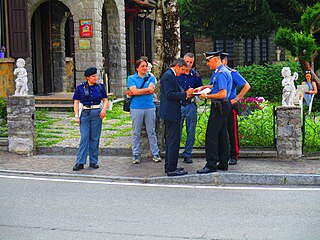
Crime in Italy, though low compared to other developed countries, is present in various forms throughout the nation. Italy is notorious for its organized crime groups, which are present worldwide and collectively referred to as the Mafia. Resultantly, financial crimes like corruption, extortion, and theft are the most common type of illicit activity in the country. Violent crimes are exceedingly rare in Italy evidenced by its homicide rate of 0.51 per 100,000 inhabitants in 2021, the lowest in Europe aside from Luxembourg and Slovenia, and one of the lowest in the world.

According to the Israel Police, the general crime rate dropped in 2020, while cyber crimes, hate crimes, domestic violence and sexual abuse incidents rose.
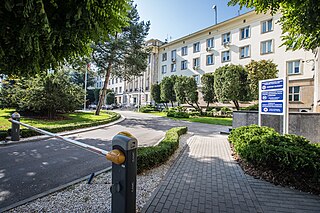
Crime in Poland refers to the incidence, deterrence, and handling of criminal activity in the Republic of Poland by Polish law enforcement agencies charged with ensuring public safety and maintaining order. Poland ranks favorably in terms of public safety, with one of the lowest homicide rates in Europe. Poland was ranked 25th in the 2022 Global Peace Index and scored 0.0 on the 2023 Global Terrorism Index.
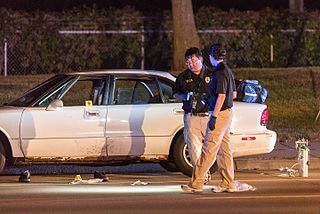
Crime in Minnesota encompasses a wide range of unlawful activities that occur within the state, regulated by both state and federal laws. While crime rates in Minnesota are generally below the national average, certain areas and types of crime have garnered public attention.

Capital punishment in Macau was formally abolished in 1976 and reiterated in the Penal Code of Macau in 1995.

Crime in Romania is combated by the Romanian Police, Gendarmerie and other agencies.
The Ferguson effect is an increase in violent crime rates in a community caused by reduced proactive policing due to the community's distrust and hostility towards police. The Ferguson effect was first proposed after police saw an increase in violence following the 2014 shooting of Michael Brown in Ferguson, Missouri. The term was coined by Doyle Sam Dotson III, the chief of the St. Louis police, to account for an increased murder rate in some U.S. cities following the Ferguson unrest. Whether the Ferguson effect really exists is subject of discussions with many published studies reporting contradicting findings concerning whether there is a change in crime rates, number of 911 calls, homicides, and proactive policing. Furthermore, the effect and influence of the portrayal of police brutality in the media is also contested.

Karuppannan Jaishankar is an Indian criminologist. He is the Founder and Principal Director and Professor of Criminology and Justice Sciences at the International Institute of Justice & Police Sciences, a non-profit academic institution and independent policy think tank in Bengaluru, Karnataka, India and an Adjunct Faculty Member of the United Nations Interregional Crime and Justice Research Institute, Italy & University of Peace, Italy, and he teaches modules of the Master of Laws (LL.M.) in Cybercrime, Cybersecurity and International Law.

Crime in Latvia is relatively low, by global standards, especially compared to previous years, when it was named the "crime capital of Europe" by Forbes in 2008. The homicide rate in Latvia was 4.9 per 100,000 people in 2020, a sharp drop from 10 cases per 100,000 people in 2000, and has been steadily decreasing. Although Latvia'a homicide rate is high by European Union standards, it is below the world average of 6.2 per 100.000. The United States Department of State has assessed Latvia's security rating as "medium", with a moderate crime rate. In recent times, crime has been increasing, particularly due to many Latvians stranded because of the COVID-19 pandemic returning to Latvia and choosing to commit crime. According to Interpol, Latvia is considered an attractive place for regional and organized criminals involved in drug trafficking, arms trafficking, human trafficking, or smuggling. According to the Central Statistical Bureau of Latvia, a third of all women in Latvia have suffered some form of sexual violence or rape, while men are subjected to violence outside the family.
Roderic Broadhurst is a criminal justice practitioner, academic, and author. He is an Emeritus Professor at the School of Regulation and Global Governance (RegNet) and Fellow of the Research School of Asian and the Pacific at the Australian National University (ANU).
{{cite journal}}: Cite journal requires |journal= (help)